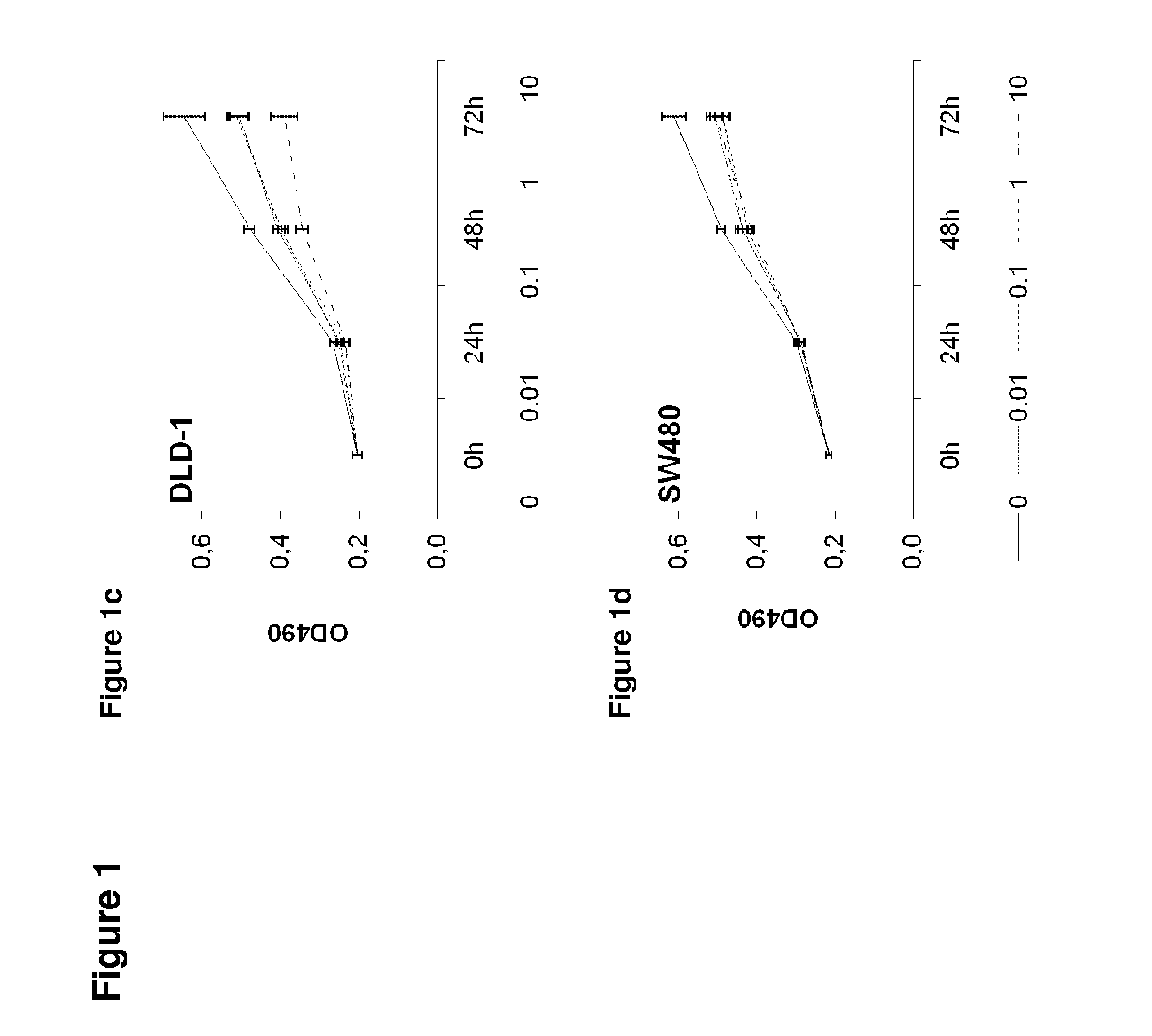Combinations of a btk inhibitor and fluorouracil for treating cancers
a fluorouracil and cancer technology, applied in the field of therapies, can solve the problems of many forms of chemotherapy failure, limit the effective anticancer therapy, etc., and achieve the effect of avoiding undesirable and often harmful side effects, reducing the effective dose of chemotheurapeutic drugs, and reducing the amount of fluorouracil
- Summary
- Abstract
- Description
- Claims
- Application Information
AI Technical Summary
Benefits of technology
Problems solved by technology
Method used
Image
Examples
example 1
In Vitro Cell Proliferation Assays
[0128]The in vitro proliferation of HCT116p53KO, SW480 and DLD-1 cells, three colon carcinoma cell lines, which are resistant to 5FU treatment, and the HCT116 cell line, which is sensitive to 5FU treatment, were grown and assayed up to 72 h after seeding, in the presence of different concentrations of ibrutinib ranging from 0 to 10 μM.
As can be seen from the graphs of FIG. 1, these short term assays indicate that ibrutinib does not alter the capacity of the cells to proliferate, even at a concentration of 10 μM.
example 2
In Vitro Colony Assays
[0129]The HCT116p53KO, SW480, DLD-1 cells and HCT116 cell lines were seeded at low density and grown for 10-12 days in the presence of different concentrations of ibrutinib ranging from 0 to 20 μM.
As can be seen from the colony forming assays shown in FIG. 2, these long term assays indicate that even in the long term, treatment with ibrutinib does not affect clonogenic and proliferative capabilities up to a concentration of 1 μM. A concentration of 10 μM Ibrutinib decreases the number and the size of the colonies indicating that it affects both clonogenicity and proliferation, which are eventually inhibited at a concentration of 20 μM.
example 3
Effect of Ibrutinib and Fluorouracil Treatment on Cell Viability
[0130]To determine the concentration of Ibrutinib to be used in combination with 5FU drug-resistant, p53-null (HCT116p53KO, SW480 and HT-29) and sensitive, p53 wild type (HCT116, RKO) colon carcinoma cell lines were grown in vitro for 72 hs in the presence of increasing concentrations of ibrutinib (from 0 to 30 μM) and their viability was evaluated at the end of the incubation using the calcein assay (a non fluorescent dye that become fluorescent upon cleavage by lysosomal esterases, active only in living cells). 100% represent the percentage of living cells at day 0, before starting the treatment. As is evident from the graphs shown in FIG. 15, up to 20 μM ibrutinib decreases the viability in a dose-dependent manner in all cell lines; at the highest concentration ibrutinib is preferentially toxic for 5FU drug-resistant, p53-null (HCT116p53KO, SW480 and HT-29).
HCT116p53KO and HCT116 cell lines were grown in vitro for 72...
PUM
| Property | Measurement | Unit |
|---|---|---|
| Mass | aaaaa | aaaaa |
| Mass | aaaaa | aaaaa |
| Mass | aaaaa | aaaaa |
Abstract
Description
Claims
Application Information
 Login to View More
Login to View More - R&D
- Intellectual Property
- Life Sciences
- Materials
- Tech Scout
- Unparalleled Data Quality
- Higher Quality Content
- 60% Fewer Hallucinations
Browse by: Latest US Patents, China's latest patents, Technical Efficacy Thesaurus, Application Domain, Technology Topic, Popular Technical Reports.
© 2025 PatSnap. All rights reserved.Legal|Privacy policy|Modern Slavery Act Transparency Statement|Sitemap|About US| Contact US: help@patsnap.com



